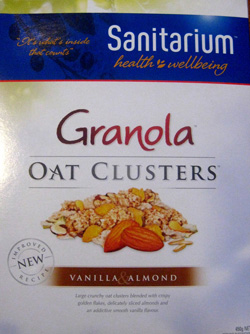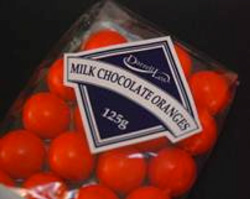Ordinary language or protected trade mark – are you doing the right thing?
There is a famous quote that imitation is the greatest form of flattery. True as that might be – this is the last thing you want when it comes to your own brand.
We use phrases all the time and don’t think about them being trade marks… band aid your finger, hoover the floor, enjoy a burgundy, lets go rollerblading, bring the Esky, put some Velcro on the bag, I Googled your business, eat Granola for breakfast and so on and so forth.
Even your trade mark could become generic one day if you are not careful and it is good to be conscious of how to use a trade mark even once you have it registered so that this does not happen. The whole purpose of trade mark registration after all is to protect your valuable asset – your brand – what gives you that competitive edge.
The recent legal battle concerning the GRANOLA cereal is a reminder that we should be conscious of how we use our brand names.
 What happened in that case? What happened in that case?
In June this year, the Federal Court of Australia held that Australian Health and Nutrition Association Limited, trading as Sanitarium Health Food Company (Sanitarium), could not enforce its trade mark registration rights over the word “GRANOLA” against Irrewarra Estate Pty Ltd, owner of Irrewarra Sourdough Bakery. This was so even though, since 1921, Sanitarium has been the owner of the Australian registered trade mark “GRANOLA”.
Sanitarium had argued that that in Australia GRANOLA has a “boutique” meaning associated exclusively with Sanitarium-branded breakfast products.
However, the bakery argued that the word “GRANOLA” merely describes a type of muesli and pointed to a list of Australian dictionary entries for the word “GRANOLA” to support its case.
The judge took the view that the bakery’s use of the words “ALL NATURAL HANDMADE GRANOLA” simply describes a product consisting of grains, fruits and nuts, which may be baked or toasted into large clusters and commented that the word “GRANOLA” started appearing in Australian dictionaries and has “percolated” into the “consciousness of Australians”.
Sanitarium could not establish trade mark infringement.
Lessons – what does all this mean for you?
An important lesson that flows from the decision is that brand owners should take steps to prevent their brands from becoming generic.
This means that while an invented word may be validly registered as a trade mark at the outset (as Sanitarium did with its “GRANOLA” mark, from 1921), its ability to stop other traders from using the brand could be limited if the word becomes used in common language.
TIPS for business women
A good tip is to use trade marks as adjectives rather than nouns.
To do this, have the common descriptive name (i.e. the noun) of the product or service follow the mark at least the first time that the mark appears in your marketing material as the following examples show:
Correct use: Buy CADBURY chocolate.
Incorrect use: Buy CADBURY.
OR:
Correct use: Use SAVLON cream.
Incorrect use: Use SAVLON.
If you take the trade mark out of the sentence and it still makes sense – that will be good trade mark use.
Take the “Rollerblades” example
Over the years, Italian-based company, Nordica S.p.A. actively enforced its “ROLLERBLADE” trade mark rights against various retailers around Australia when they used the word “rollerblades”. As a result, the trade mark is still registered (Trade Mark Number: 480323) and traders now use other words such as “inline skates” instead.
According to media reports, Johnson & Johnson changed the lyrics of their Band-Aid television TV ad from "I am stuck on Band-Aids, 'cause Band-Aid's stuck on me" to "I am stuck on Band-Aid brand, 'cause Band-Aid's stuck on me."
"Kleenex tissues" ("facial tissues" being the generic descriptor) for the same reason use the word TISSUES after the brand name to help avoid the brand name becoming generic.
 Another example for chocolate lovers (like the writer) is JAFFAS. Darrell Lea has resorted to using the term MILK CHOCOLATE ORANGES (pictured left) to avoid infringing the JAFFAS Australian registered trade mark (owned by Nestle Australia Ltd). Another example for chocolate lovers (like the writer) is JAFFAS. Darrell Lea has resorted to using the term MILK CHOCOLATE ORANGES (pictured left) to avoid infringing the JAFFAS Australian registered trade mark (owned by Nestle Australia Ltd).
GOOGLE Inc. is no doubt facing its own set of challenges as people are using GOOGLE as a verb (e.g. I googled you the other day). They can use the term correctly (e.g. “use the Google search engine to look up information on the Internet”) but this is not stopping people from using the brand name generically in common English speak. Google has gone to lengths to prevent this process, discouraging publications from using the words such as 'googling' in reference to web searches.
So if you hear someone using your trade mark in a generic way, ensure you stop them … or risk losing it.
TIP: Using the ® symbol always beside the mark can also reduce the risk of it becoming generic.
The following list of trade marks are in common use but some are still registered as trade marks
- THERMOS (registered since 1907 for glass bottles, flasks and other utensils or metal by Thermos L.L.C. – trade mark no 4938);
- LAUNDROMAT (registered since 1980 for renting of washing machines by Electrolux Home Products Pty Limited – trade mark no 349514) ;
- ESKY (registered since 1961 for cooling equipment such as portable ice boxes by Coleman Brands Pty Ltd – trade mark no 170377);
- BUBBLEWRAP (registered since 2007 for plastic packaging or cushioning material by Sealed Air Corporation (US) – trade mark no 1169891);
- JELL-O (registered since 1920 for food such as jellies and jams by Kraft Foods Global Brands LLC – trade mark no 28677);
- POPSICLE (registered since 2007 for food such as frozen confections by SOCIETE DES PRODUITS NESTLE S.A. – trade mark no 1199039);
- TUPPERWARE (registered since 1961 for small domestic utensils and containers by Dart Industries Inc. – trade mark no 165120);
- PHILADELPHIA (registered since 1995 for cream cheese by Kraft Foods Limited – trade mark no 669177) ;
- TWISTIES (registered since 1961 for snack foods by Frito-Lay Trading Company GmbH – trade mark no 166590); and
- TRUMPET (registered since 1992 for ice cream by Societe des Produits Nestle S.A. – trade mark no 592229).
Disclaimer – The contents of this article are of a general nature only. They do not replace tailored legal advice
*Sharon Givoni runs her own legal practice in the area of intellectual property law and has clients across all industries and has many clients that are women in business including clients that are part of Little Black Dress Group. She can be contacted on 03 9527 1334 / 0410 557 907 or emailed on sharon@iplegal.com.au. Her website is located at www.sharongivoni.com.au |


 What happened in that case?
What happened in that case? Another example for chocolate lovers (like the writer) is JAFFAS. Darrell Lea has resorted to using the term MILK CHOCOLATE ORANGES (pictured left) to avoid infringing the JAFFAS Australian registered trade mark (owned by Nestle Australia Ltd).
Another example for chocolate lovers (like the writer) is JAFFAS. Darrell Lea has resorted to using the term MILK CHOCOLATE ORANGES (pictured left) to avoid infringing the JAFFAS Australian registered trade mark (owned by Nestle Australia Ltd).